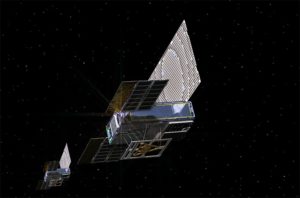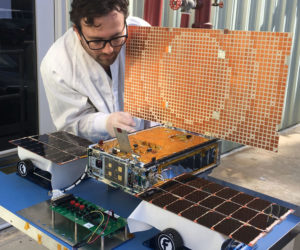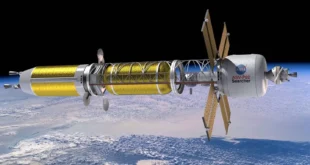
Due for launch on May 5th from Vandenberg Air Force Base, the InSight Mission or Interior Exploration using Seismic Investigations, Geodesy and Heat Transport, is a Mars lander designed to give the deepest understanding yet of the ‘inner space’ of Mars including its crust, mantle and core.
As if that is not interesting enough, on board the rocket carrying the lander will be 2 cubesats called Mars Cube One (MarCOs), about the size of a briefcase, that will also fly towards Mars, behind InSight. The spacecraft have been nicknamed Wal-E and Eva after Pixar characters and will be propelled by compressed gas that is found in everyday fire extinguishers. The idea behind the cubesats is to make an attempt to use the duo to relay InSight data as it enters the Martian atmosphere and lands. The data will be sent back to Earth using Mars Orbiters.
Wal-E and Eva’s goal is to test new miniaturised deep space communication equipment. This will be a milestone as it is a first test of CubeSat technology at another planet, which researchers hope can offer new capabilities to future missions.
The big test will be to see how the cubesats cope with the conditions they will experience on their trip to Mars. Each is equipped with a folding high-gain antenna to relay data about InSight as it enters the Martian atmosphere and lands.

The MarCOs won’t produce any science of their own, but the twins will be a crucial first test of CubeSat technology beyond Earth orbit, demonstrating how they could be used to further explore the solar system. “These are our scouts,” said Andy Klesh of JPL, MarCO’s chief engineer. “CubeSats haven’t had to survive the intense radiation of a trip to deep space before, or use propulsion to point their way towards Mars. We hope to blaze that trail.”
The team at JPL realise that there is no guarantee of success, but if these two tiny spacecraft can successfully complete their mission, they will give fresh understanding to engineers about the challenging experience of landing spacecraft on the Red Planet. This knowledge will act as a catalyst in terms of development of technology for future Mars missions.
If this has piqued your interest, you can watch the launch on May 5th via the InSight website: https://mars.nasa.gov/insight/
 SpaceWatch.Global An independent perspective on space
SpaceWatch.Global An independent perspective on space




